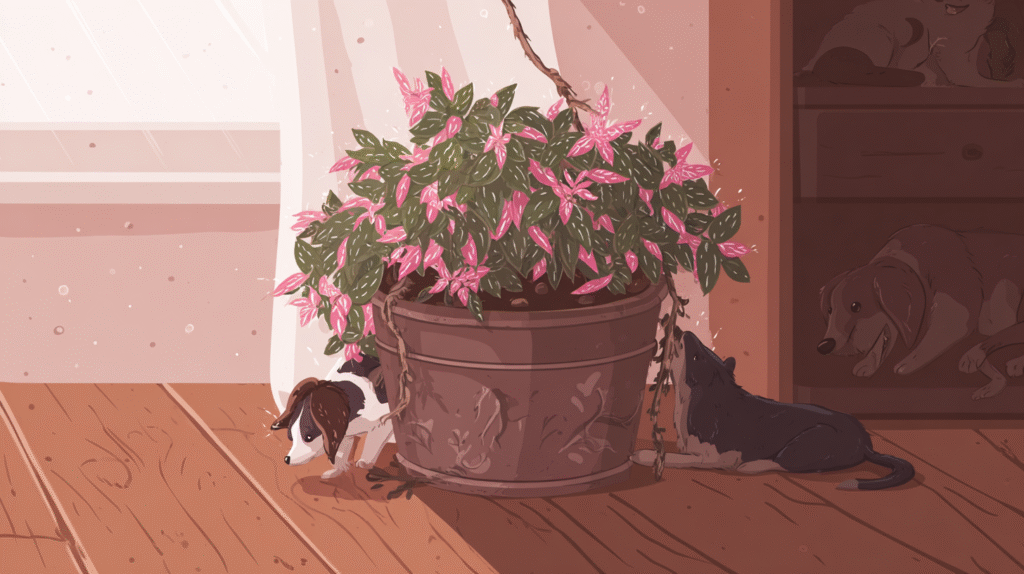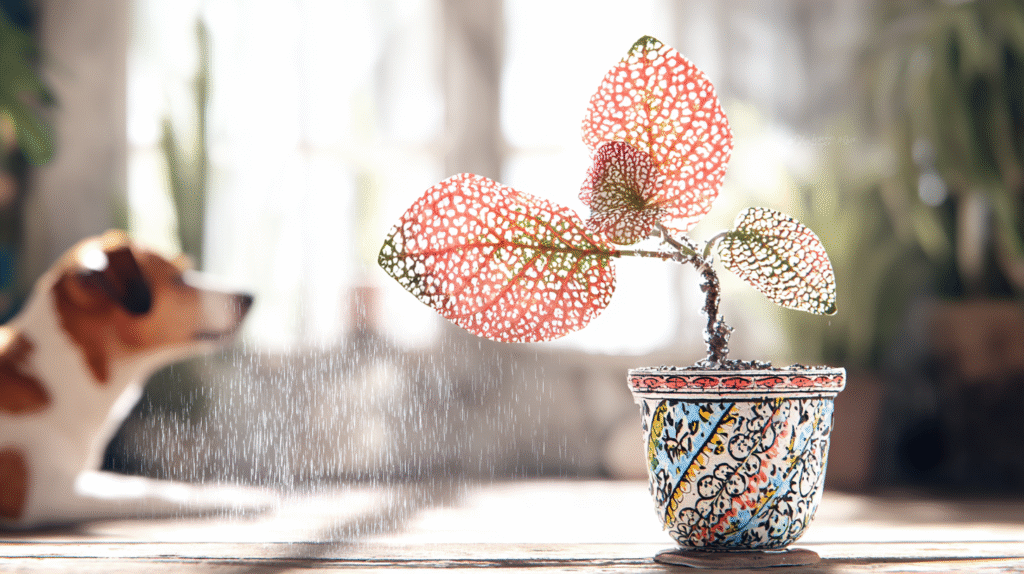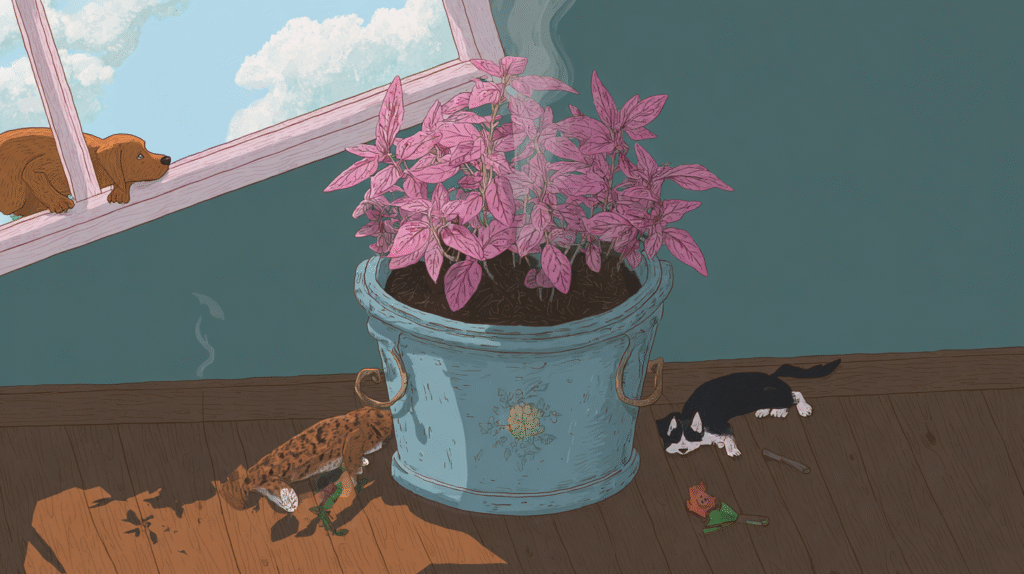My first polka dot plant lasted exactly four days. Four. Days.
I’d bought it at Trader Joe’s, totally seduced by those hot pink speckles splashed across green leaves. Looked like a preschooler’s art project in the best way possible. By day three, it was drooping so hard I thought someone had sucked the life out of it with a straw. Day four? Complete theatrical collapse. I panicked, doused it with water, and watched it spring back to life like nothing happened.
That’s when I learned polka dot plants (Hypoestes phyllostachya if you’re fancy) are basically the theater kids of houseplants. Everything’s a performance. Everything’s dramatic. And honestly? After two years and five different polka dots, I wouldn’t have it any other way.
Why I Keep Buying These Ridiculous Plants
Look, I could grow pothos. Nice, chill, un-dramatic pothos that never wilts or throws fits. But where’s the fun in that?
Polka dot plants are straight-up gorgeous. Pink ones, white ones, red ones — I’ve even seen purple. They grow stupid fast when they’re happy, which means you actually see progress week to week. And unlike my prayer plant that suffers in mysterious silence until it’s dead, these guys tell you IMMEDIATELY when something’s wrong.
Thirsty? WILT. Too much sun? Bleached spots. Not enough light? “I shall now turn boring green, goodbye.”
It’s like having a plant with subtitles. Dramatic subtitles, but still.

What These Madagascan Divas Actually Want
So these plants come from Madagascar’s forests where it’s warm, humid, and they live under bigger plants. This explains literally everything about why yours is probably mad at you right now.
The Light Situation
Remember Goldilocks? That’s your polka dot plant with light. I stuck my first one in a dark corner because “low light tolerant,” right? Wrong. Turned solid green in two weeks. Moved it to my windowsill? Bleached white spots.
Finally found the sweet spot about 3 feet from my east window. Gets some gentle morning sun, bright indirect light after. Now it’s pink as a flamingo and growing like it’s on steroids.
Water: The Daily Soap Opera
Oh boy. Here we go. These plants don’t just get thirsty — they PERFORM thirsty.
Picture this: You wake up. Coffee in hand. Walk past your plants. Your polka dot that was perky last night? Now draped over its pot like a Victorian lady with the vapors. Dead. Done. Expired.
You water it.
Two hours later? “What drama? I’ve never drooped in my LIFE.”
This happens every. single. time. they get thirsty. Which in summer is like every other day. I’m not kidding. I check mine more than I check Instagram. Top inch dry? Water time. Let it go too long? Full theatrical collapse incoming.
Winter’s more chill. Maybe every 4-5 days. But summer? These things drink like they’re prepping for a drought that’s never coming.
Humidity: The Secret Sauce
Okay so Madagascar? Humid AF. Your apartment in winter? Sahara desert vibes. This is a problem.
My first winter with polka dots was rough. Crispy edges everywhere. Looked like someone took scissors to them. Then I got smart:
- Grouped all my humidity lovers together (plant gang!)
- Set up a pebble tray (fancy word for rocks in water)
- Bought a tiny humidifier for $20
- Sometimes mist them when I remember (which isn’t often tbh)
The difference? Night and day. Full, lush leaves instead of crispy sadness.
Temperature Tantrums
These babies are TROPICAL. They want it warm. Always. Forever.
I learned this when my gorgeous pink polka dot lived by the door. Every time someone came in during winter — whoosh, cold air — and BAM. Dropped leaves like it was autumn. Moved it to the warmest spot in my apartment (by the kitchen, away from all doors and windows) and it stopped having cold-induced breakdowns.
Keep ’em between 65-80°F. Any colder and they get vengeful.

Dirt and Pots and All That
After drowning one in a cute pot with no drainage (RIP), I learned: HOLES IN POTS. Always. No exceptions. “But I’ll be careful with watering!” No you won’t. Trust me.
For soil, I just use:
- Regular potting mix from whatever store
- Throw in some perlite so it doesn’t get swampy
- Maybe some peat moss if I’m feeling fancy
Nothing special. They’re dramatic about everything EXCEPT soil apparently.
Feeding Time at the Zoo
Spring and summer these things are hungry hungry hippos. I feed mine every two weeks with liquid fertilizer watered down to like, quarter strength? Learned the hard way that full strength = burnt leaves = sad plant parent.
Winter I basically forget they exist, feeding-wise. Maybe once a month if I remember. They’re cool with it.
The Pruning Thing Nobody Mentions
Here’s what ticked me off: Nobody told me these plants naturally want to flower and DIE. Like, that’s their plan. Grow, flower, peace out.
So you gotta keep pinching them. Sounds mean, is actually nice. See a flower bud? Pinch. Getting leggy? Pinch. Want it bushier? Pinch pinch pinch.
First time I did this I felt like a monster. Now? I’m pinching every couple weeks and my plants look like fluffy pompoms instead of sad twigs. Plus, every piece you pinch can become a new plant. It’s like printing money but with plants.
When Things Go Wrong (And They Will)
“Why is my pink plant turning green?” Needs more light. It’s not dying, just boring. Scoot it closer to a window.
“It’s drooping but the soil is wet!” Uh oh. Check the roots. Might be rot. Might need to take cuttings and start over. (Ask me how I know.)
“Crispy edges everywhere!” Humidity too low or you forgot to water again. Probably both.
“It’s growing but looks like garbage?” PINCH. IT. Seriously, don’t be scared. It’ll look amazing in two weeks.

Making Baby Plants Because Why Not
These things propagate easier than rumors. Cut a piece with a few leaves, stick it in water, wait like a week. Boom. Roots.
I’ve given away so many polka dot plants. My friends are like “please no more” but I keep making them because it’s addictive. Success rate is basically 100% if you do it in spring/summer. Winter they’re less cooperative but still usually work.
The Seasonal Mood Swings
Spring/Summer: Growing like weeds, drinking constantly, need pinching every time you turn around. This is their Olympics.
Fall/Winter: Kinda sad, growing slower, less colorful. Don’t panic. They’re not dying, just moping. Water less, stop feeding, let them be moody.
Real Talk: Is It Worth It?
After two years of polka dot drama, would I recommend them? Hell yes.
But like… prepare yourself. They’re needy. They’re dramatic. They’ll wilt if you look at them wrong. But they’re also gorgeous, they grow fast enough to be satisfying, and they’re weirdly addictive once you figure them out.
My collection started with one grocery store impulse buy. Now I’ve got five in different colors and a windowsill full of propagations. My friends think I’m nuts. My pink polka dot just wilted while I wrote this and needs water. Again.
But when the light hits those speckled leaves just right? When you nail the care and they’re growing like mad? When visitors literally stop mid-sentence to ask what that gorgeous plant is?
Totally. Freaking. Worth it.
Just maybe start with one. And keep it away from doors. And check it every day. And don’t panic when it wilts. And… you know what? Just dive in. Welcome to the drama. You’ll love it. 💗






